#Quercus garryana
Video
youtube
Really quality video explaining many things about Quercus garryana or gary oak. It goes over the traditional significance of oak savanna habitat to coast Salish people, as well as why preserving this habitat is so important.
3 notes
·
View notes
Photo
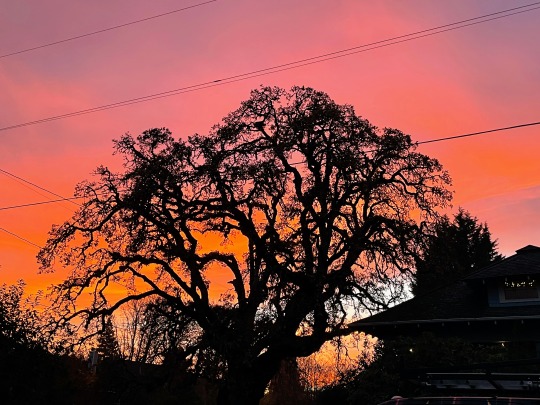
Quercus garryana
3 notes
·
View notes
Text
instagram
#Instagram#rachel mentzer#fall#autumn#oak#maple#Quercus#autumn leaves#acer#beech#Fagus#acorn#silver maple#Acer saccharinum#pin oak#Quercus palustris#oregon white oak#Quercus garryana#pinecone
1 note
·
View note
Text
I'm in a wetlands class that has 6 hours of livestreaming, 8 hours of prerecorded material, and 14 hours in person (half of which I missed because of Rosh Hashanah).
the instructor has spent 30 minutes of our last livestreamed session painfully extracting class participation and I can't even help because I have learned very little from this class and haven't even watched half the prerecorded material and had to miss the only field trip so far😭
#like there are details about like. soil math with numbers i can't remember. but i thought this would have more depth#also i cannot vibe with capitalizing scientific names like Quercus Garryana. i do not like the capital specific epithet#40 minutes in with no new material....
0 notes
Text

Guys, I love him so much 😭😭😭
0 notes
Text
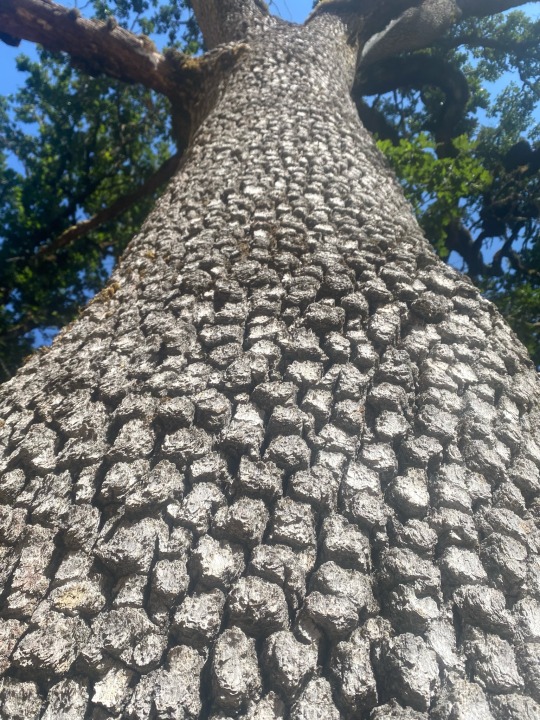
Oregon white oak..quercus garryana
181 notes
·
View notes
Text

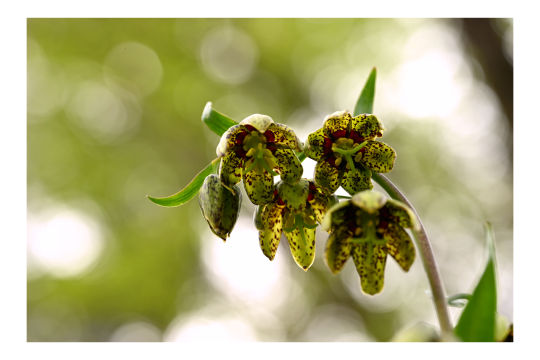
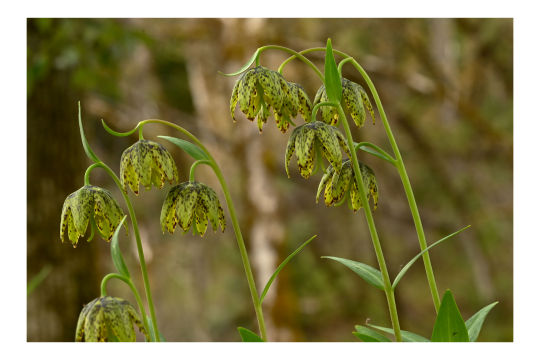

A beautiful patch of Checker Lilies, Fritillaria affinis, in Oregon White Oak (Quercus garryana) / Black Oak (Quercus kelloggi) woodland, above the Trinity River.
#Fritillaria#Checker Lily#Lillium#forest floor#Oak Woodland#Trinity River#six rivers national forest#spring#botany#public lands#Klamath Mountains#Northern California#beautiful nature#naturecore#flower photography#macrophotography#botany photography#nature photography#original photographers#nikon photography#nikon#105mm#photographers on tumblr
26 notes
·
View notes
Text



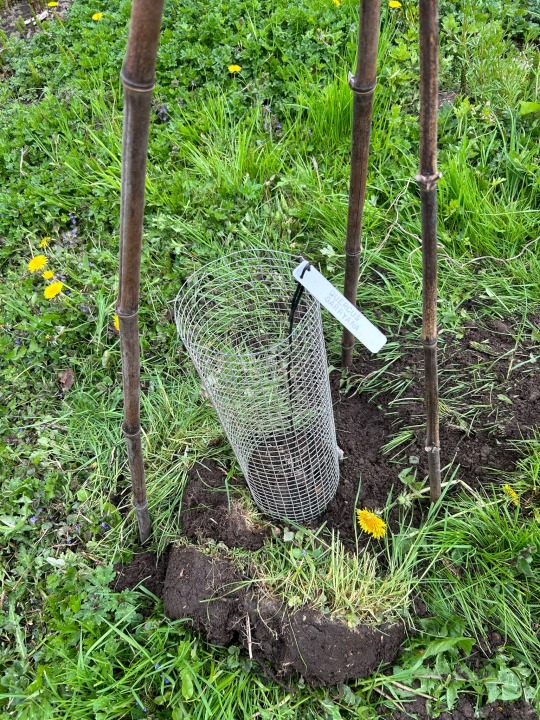
This 2 year old Garry oak has already put a root out of the bottom of the pot.
22 notes
·
View notes
Text
Oakland
Oregon white oak, Quercus garryana
Oakland, fifty miles north of here, was named for the oaks that formerly inhabited it. Imagine that! Although valley oak, Quercus lobata, is native, and assumed to be the origin of the regional name, coast live oak, Quercus agrifolia, was likely more abundant there at the time.
Of the many other towns in California with horticultural names, a few are also…
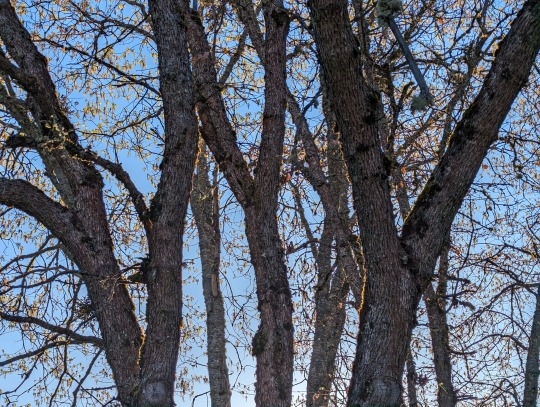
View On WordPress
0 notes
Text
Esme "Leaping-Ghost" Journal Entry #33
Anton, Julie, and I have checked in at a motel down on Hwy 712 by Macredie Station. Anton seems to really like the cherry pie at D's Diner, and Julie said she was going to head to the bawn and see if she could hail a Warder from the sept.
Trillium is a fascinating town. The gauntlet separating the real world from the Near Umbra is thinner here, even compared to other rural towns. I love the verdant life that seems to be everywhere in Trillium; Lichens on the sidewalks, Isothecium myosuroides growing on rooftops, and moss even seems to grow on the rubber seals on cars that go unwashed for too long.
I identified some ferns growing out of a stop sign as Polypodium glycyrrhiza, and there are old quercus garryana growing throughout the entire town. I stepped sideways and found that there were wyldlings everywhere around Trillium in the umbra, chewing on the Pattern Web. This must explain why the real world is so verdant here!
I am afraid I have already fallen in love with the woods, and cannot wait to find the Sept soon. I hope to find an Oak savannah in the wilderness. The idea of finding irises and orchids in the middle of the woods seems to much like something out of a fairy tale.
Addendum: I am so giddy with excitement about everything that I forgot to mention that Anton found a lead on a local source for information about Dume'fa. We are planning to meet with an elder of the Kalapuyan tribe tomorrow who has some information on her. I hope this information will be valuable to my research
#dead mountain#dume'fa#elk prairie sentinels#fiction#world of darkness#werewolf: the apocalypse#world building#Antagonists and Allies#Esme#Leaping-Ghost#Anton#Julie#rutgers65#bites-the-bully#act 1#Sept of the Trillium Glade#Glass Walkers#Black Furies#Children of Gaia
1 note
·
View note
Text

Fagaceae Quercus garryana
Oregon White Oak
Identification via Pl@ntNet
0 notes
Photo

California scrub jays can be spotted year-round in our area, inhabiting open scrublands, specifically oak and pinon, or woodlands. They are territorial during the breeding season, March through April, and will return to the same nesting site each year. Breeding pairs are monogamous and prepare for, feed, and protect their broods together. Non-bonded males often flock together until they successfully defend a territory, sometimes taking seven years to achieve, and attract a mate.
California scrub jays are omnivores and adapt their diets to the changing seasons. They hunt insects, primarily caterpillars, in the early spring during the breeding season. Then in the summer, they switch to consuming mostly fruits and grains. In the fall, they transition to eating seeds and nuts, specifically acorns, as fruit becomes less available. California scrub jays also hunt amphibians and lizards and have been known to prey on other bird species and their eggs.
California scrub jays are essential seed dispersers for many plants and trees. They will often store caches of seeds and nuts on the ground under rocks or plant debris. If they forget where a cache is or about it entirely, the seeds have the opportunity to germinate. California scrub jays have many mutualistic and parasitic relationships with various other organisms. Take the Columbian black-tailed deer (Odocoileus hemionus columbianus), which benefits from California scrub jays consuming ticks and flies from their skin.
You can encourage California scrub jays by planting Oregon white oaks (Quercus garryana), Portland and Vancouver’s powerhouse native oak species. Oak trees are a preferred host plant for California scrub jays for nesting and easy access to acorns. In addition, you can grow plants that attract caterpillars, a favorite food for nestlings, as well as plants that produce fruit. Provide medium-sized rocks or leave small areas of plant debris for California scrub jays to store seeds and nuts. As always, do not spray pesticides on or near your Oregon white oak or caterpillar host plants. Doing so may harm or kill your plants and the insects and California scrub jays that rely on them for food.
For more like this visit portlandhabitatwatch.com
0 notes
Text
Climate change leads to invasive insect expansion on West Coast
https://sciencespies.com/nature/climate-change-leads-to-invasive-insect-expansion-on-west-coast/
Climate change leads to invasive insect expansion on West Coast
Climate change has led to warming temperatures in the Pacific Northwest, leading some insect species to expand their range into more northerly oak savannas, according to new research from Binghamton University, State University of New York.
Side by side, Dylan Jones displayed photos of two oak leaves. One, healthy and green, dotted by the occasional gall, a structure made by a herbivorous species of oak gall wasp. The other leaf was yellowed and tattered, the victim of an insect population without predatory checks and balances. Climate change has led to warming temperatures in the Pacific Northwest, leading species such as Neurotereus saltatorius to expand their range into more northerly oak savannas.
“In the native range, you might find a handful of galls on a single leaf. In the expanded range, sometimes you’re finding thousands on a single tree,” said Assistant Professor of Biological Sciences Kirsten Prior. “This is pretty prevalent throughout Vancouver Island.”
Jones, a Binghamton University doctoral candidate in biological sciences and Clifford D. Clark Diversity Fellow, is the lead author of a research paper recently published in the Journal of Animal Ecology on the situation. Co-authors on “Latitudinal gradient in species diversity provides high niche opportunities for a range-expanding phytophagous insect” include Prior, field technician Julia Kobelt, then-undergraduate Jenna Ross and Assistant Professor of Biological Sciences Thomas Powell.
Oak savannas are grassy and shrubby areas that feature oaks as the dominant tree species. The oak species in question — Quercus garryana — requires a dry environment. As a result, oak savannas are often found in the rain shadow of the West Coast’s mountain range, Prior explained.
A diverse and ecologically important group of trees throughout North America, oaks host a wide diversity of insect species, such as oak gall wasps. These wasp species form growths known as galls that can be striking in their varied forms, from those that resemble large apples to others with colorful spikes reminiscent of sea urchins.
advertisement
Interestingly, Alfred Kinsey — yes, that Kinsey — studied oak gall wasps before transitioning his field of study to human sexuality.
“There has been a long fascination by biologists and amateurs for this group of species because they’re pretty charismatic,” Prior said. “You can go to an oak and see all these structures on it.”
In addition to their herbivorous creators, these galls host other species of insects, including a dazzling variety of parasitoid wasps, one of the most diverse and ecologically important groups in the animal kingdom, the latter for their role in keeping insect pests in check. Parasitoid wasps lay their eggs in the gall; after hatching, their larvae then eat the oak gall wasp larvae.
Oak gall wasps are highly diverse in North America, but not well-documented; their evolutionary relationships and even the identification of some species remain unknown. A consortium of scientists across the continent is working to change that; Jones and Prior are part of this effort.
“It’s important to continue to document biodiversity. We still haven’t described a good portion of the biodiversity on Earth, particularly with insects,” Prior said.
advertisement
Ecosystem invaders
The researchers checked their study sites on three different occasions during the course of that summer. Some were quite remote, involving trips down dirt logging roads, or located on Bureau of Land Management property or on preserves associated with Indigenous communities. Others were suburban, located a short jaunt from cities.
Because of urbanization, few oak savannas remain on Vancouver Island; those that are left are highly documented and tended by landowners.
“We’ve had long relationships with lots of landowners there that allow us to work on their property,” Prior said. “Some of them are so jazzed to have researchers there.”
Biodiversity tends to work on a latitudinal gradient, Jones added: The closer you are to the equator, the more species you have. A similar situation holds true when it comes to higher altitudes. When one species can expand its range due to warming temperatures, it can move into areas without a diversity of predators and competitors, eventually overwhelming the ecosystem.
The case of the oak gall wasps highlights the importance of biodiversity and the potential long-term ramifications of climate change, the researchers point out.
“Biodiversity can be really important in potentially protecting areas from invading species,” Jones said. “If we have strong competitors and predators, this might make areas less susceptible to invading species.”
#Nature
1 note
·
View note
Photo
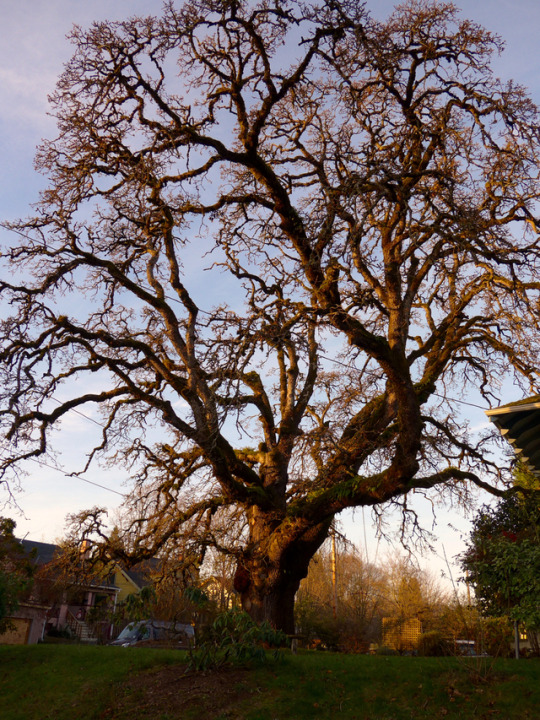
There's an ancient oak across from my house and this is how it looked this morning as the sun rose.
The species is Oregon’s native white oak, Quercus garryana. Some have stood for more than 300 years, going back to the time when white oak trees and grasses covered half a million acres across the Willamette Valley. Less than 2 percent of that oak savanna remains.
But the scattered giants standing alone continue to play a pivotal role in the Willamette Valley ecosystem.
Large, old trees improve nutrients and water retention in soils. They provide places for wild animals to nest and feed, and for native plants to grow. They become islands of refuge that allow animals to move around a landscape.
7 notes
·
View notes
Text
OREGON FRIENDS, PLEASE HELP SAVE NATIVE BIODIVERSITY! STOP THE BASALT QUARRY AT LIBERTY HILL!
There’s a really special place of great conservation importance located northwest of Portland, just north of the small town of St. Helens, and it’s gravely threatened by the expansion of a basalt quarry. Before I continue, I think I need to explain what makes this site special.
A lot of people living in western Oregon today are unaware of this, but the Willamette Valley was once dominated by oak savanna. The valley bottomlands were a complex mosaic of wetland types, including shrub swamps and sphagnum bogs, and any upland areas with well-drained soils were oak savanna; large expanses of prairie with scattered oaks. The moist, shady douglas-fir forests that Oregon is known for today were historically confined to the coast range and to the western slope of the cascade mountains. Furthermore, the oak savanna was maintained through a system of prescribed burning by the Kalapuya, the indigenous people who once called the Willamette Valley home. This system of prescribed burns prevented encroachment by douglas-fir; white “doug fir” trees lack fire resistance until are very old, the native oak species, Quercus garryana, is highly resistant to fire, even at a relatively young age. The herbaceous plants that require oak savanna also tend to be fire-resistant, and some of them could be considered pyrophytes; they require periodic fires in order to thrive. Several of them are also edible; the Kalapuya maintained the oak savannas primarily to harvest the edible bulbs of Camas species (Camassia quamash and Camassia leichtlinii), but also because they attracted deer and elk, which were important sources of protein.
After European settlers showed up in the early 1800s, the Kalapuya were decimated by disease. In the 1850s, the people who remained were forced into ceding their land to the United States and rounded up into reservations, where they were nearly lost to a well-coordinated attempt at ethnocide by the federal government.
At this point, their lands had been almost completely lost to white settlers, who began to suppress the prescribed fires long before the Kalapuya were marched away to reservations. Camas fields, which require wet soil in winter and spring (Camassia leichtlinii essentially requires seasonal wetland conditions), were ditched and drained, and the douglas-fir slowly but surely crept into the oaks. Later, once the value of douglas-fir as timber was fully realized, this trend was accelerated by deliberate planting of douglas-fir trees. Much later, in the 1900s, extensive urbanization began to eat away at what remained of native Oregon prairies and oak savanna.
Today, only about 5% of the original extent of oak savanna remains in Oregon. And most of that 5% is in need of restoration or has already lost the great majority of its native species. The very best remnant oak savanna I’ve personally seen still retained a number of plant species that I’d never seen before in person, but was suffering from invasive species brought in by a quarry that was started nearby. And that’s the unfortunate part; because some of the better remnant oak savanna occurs on basalt outcrops in the foothills of the coast range, it is also vulnerable to quarrying.
Which is where Liberty Hill comes in. Liberty Hill is a mosaic of camas meadows, oak woodland, and wetlands occurring on a large basalt outcrop overlooking the Columbia River. I have not visited Liberty Hill in person, but from the photos I have seen, it has somehow escaped the abuses of the last century and also retained its herbaceous plant species, including many species that have become extremely rare in the northern Willamette Valley. I have attached a link to the iNaturalist observations for vascular plants on Liberty Hill and the surrounding area so that other people can see what grows there.
Sadly, Liberty Hill is private land, owned by Weyerhauser. Weyerhauser has leased the land to Knife River, a building materials company that operates other basalt quarries in western Oregon. Predictably, Knife River has submitted a mining permit application to mine out a part of Liberty Hill. The details of how the quarry would affect Liberty Hill are available in the links below, but it would essentially be a lost cause if it were quarried. The hydrology would be changed drastically, causing wetlands to dry out sooner, and these types of operations typically result in the introduction of invasive species, clinging to heavy machinery as seeds hidden in dry mud carried between worksites.
The public comment period for the mining permit is ending TODAY, 3/3/21; if any of my followers on Tumblr could please consider sending an email comment, it would really help. If you have time, writing a unique comment is far more effective than copying the suggestions in the links below. If you don’t like the comment suggestions offered, here are some that I have thought of:
- Seasonal wetlands are important amphibian habitat for red-legged frogs and western toads
- Native pollinators require native plants; this is one of the last strongholds for some of these plants in northwestern Oregon
- Liberty Hill is a time capsule of what western Oregon once was; it is an important reference for restoring similar sites
Finally, your email comments must include the REFERENCE NUMBER FOR THE PERMIT APPLICATION and the commenters REAL NAME and ADDRESS
To make it easier, I have copied the correct email address and project name/reference number below, as well as a simple heading for you to include in the body of the email comment:
Email address: [email protected]
Email subject box: Public Comment For: Watters Quarry Expansion (NWP-2020-065)
Email text (below this line):
Name: [real name]
Address: [real address]
LINKS FOR MORE INFO:
General Info: https://www.oregoncamas.com/conservation
Comment Period Info: https://www.oregoncamas.com/pending-removal-mining-permit
Army Corps of Engineers Mine Application:
https://www.nwp.usace.army.mil/Missions/Regulatory/Notices/Article/2490987/nwp-2020-065/
List of Vascular Plant Observations (iNaturalist): https://www.inaturalist.org/observations?nelat=45.87331367450567&nelng=-122.80286164270085&place_id=any&swlat=45.865096152803716&swlng=-122.83923955037328&taxon_id=211194&view=species
705 notes
·
View notes
Photo

Quercus Garryana exploration! Westland knows a lot about Garryana oak and I spent the night with JTR of @axisofwhisky learning all about it. Oak exploration was a very fun style of tasting and I would like to continue it and I’m thinking Mizunara next. Any suggestions? #garryana #quercus #alba #mizunara #oak #westland #pacificnorthwest #americanwhiskey #singlemalt #americansinglemalt #maltwhiskey #nativeoak #singlecask #blendedwhiskey #fivemalt #peatedmalt (at Chicago, Illinois) https://www.instagram.com/p/By2jueonvbw/?igshid=dkg93dilpfsh
#garryana#quercus#alba#mizunara#oak#westland#pacificnorthwest#americanwhiskey#singlemalt#americansinglemalt#maltwhiskey#nativeoak#singlecask#blendedwhiskey#fivemalt#peatedmalt
0 notes